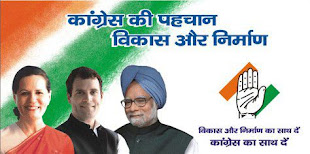O.P. Sharma
Dogri, the language spoken by the dogras living in J & K and elsewhere is a living and vibrant language. As part of mainstream Indian regional languages, Dogri too is now contributing significantly to Indian literature.
The Dogri folk music and world-famous Basohli miniature paintings constitute proud cultural heritage of India. Besides, Dogras’ daring military deeds form a stirring chapter of Indian history. Not only their rich art and cultural heritage, their mother-tongue, Dogri is also flourishing and enriching Indian literature. The record of making rapid strides in its literature especially during the last six decades is noteworthy. During the reign of Maharaja Ranbir Singh (1857-1885), Dogri was the official language of the Jammu and Kashmir State and afterwards Urdu became the official language and medium of instruction.
In the past, Dogri alphabet were called “Ganamat” and later modified to “Namey Akkhar” during regime of Ranbir Singh. On recommendation of an official committee, Devnagari script for Dogri was adopted in 1955 and it was incorporated in the State Constitution in 1957.
Jammu and Kashmir has the unique distinction of having its own State Constitution which says that the official language of the State shall be Urdu but English shall unless the Legislature by law otherwise provides shall be used for all official purposes. Kashmiri, Dogri, Gojri, Balti (Pali), Dardi, Punjabi, Pahari, Ladakhi and Gojri are the regional languages included in the Sixth Schedule of the State Constitution. This sensitive and strategic northern most State is multi-ethnic and multi-lingual where all sections and languages are provided adequate opportunities for growth and development.
Living Language
The Kashmiri language was included in the 8th Schedule of the Indian Constitution in 1950 but Dogri was left out on the plea that only one language from a State could be taken. After substantial literary progress and long drawn struggle, Dogri too has been accorded constitutional status from December 22, 2003, thus giving it due status in the Indian Constitution which has opened up new windows of opportunities and also posed some challenges for its rapid advances.
Dogri Sanstha, a voluntary literary organisation, set up in 1944 in Jammu, has done pioneering work for promotion and popularisation of Dogri language. A boost was given to this language when Dinu Bhai Pant wrote a humorous Dogri booklet “ Guttalun” (Titillations) in 1945 which kindled public interest and touched high popularity graph among readership.
Sustained Progress
The Sanstha, in a way brought about renaissance when a number of writers of other languages switched over to Dogri literary works. The books in Dogri began to be authored on various themes and in different genres. A momentum was created by the Dogri Sanstha and some other non-governmental organisations stepped in to facilitate literary momentum.
The Jammu and Kashmir State established in 1950s the Academy of Art, Culture and Languages for preservation and promotion of its literary and cultural heritage. Doordarshan too is contributing their mite in projection and popularisation of this language.
The Sahitya Akademi, New Delhi recognised Dogri language in 1969 and started giving annual awards to Dogri writers and poets for their creditable contribution to Dogri language and its literature. It has given a much needed boost to Dogri by including it in its publications and organising various seminars and workshops.
The Dogri Sanstha has demanded introduction of Dogri, like Kashmiri compulsorily at the primary level. The necessary ground work for it has been done with suitable books and syllabus already prepared by experts. Dogri is being taught in some Degree colleges and University of Jammu. Research work is also in brisk progress.
This language has distinction of having 6-volume Dogri-Dogri , Hindi-Dogri dictionaries and also having collection of Dogri folk tales. A Style Book has also come up in collaboration between experts of Central Institute of Indian Languages, Mysore and the Dogri Sanstha to serve as guide for writers and poets. Dogri has creditably done some monumental works like translation into Dogri of Bhagwat Gita, Tagore’s famous works as also Prem Chand’s “Godaan” and now this trend is get accelerated. Like other Indian languages, Dogri is assimilating new words, adopting new trends and themes.
Today Dogri language, like most of other regional languages, is faced with many challenges and difficulties. The globalization which is gobbling all things, small and local, including languages and cultures. To tackle the problem one must realize that globalization derives its strength and sustenance from ever-evolving and growing tools of Media and Information Technology.
The inclusion of Dogri in Indian Constitution has opened up numerous possibilities for its speedy and sustained growth through usage of Information and Communication Technology.
Dogri: IT-Savy
The Government realizing the importance of developing Information Technology tools in regional languages to enable them to cope up with the requirements of the future, The Department of Information Technology has initiated a scheme of producing software tools in all Indian Languages included in the 8th Schedule of the Constitution. Pursuing this scheme, recently, Department of Information Technology, Government of India and C-DAC have released a set of software programmes and tools in Dogri for public usage and made these available, free of cost. These nine software packages cover a wide range of computer and internet usage for opening new vistas of growth and development.Dogri language is growing at a fast pace and making its solid contribution to Indian literature.


























0 Comments